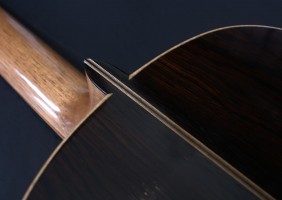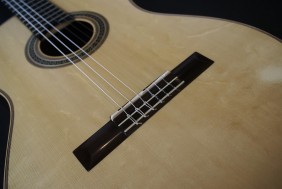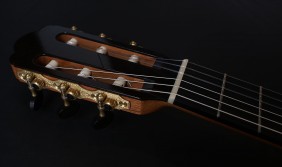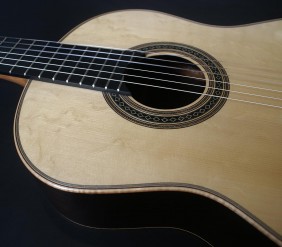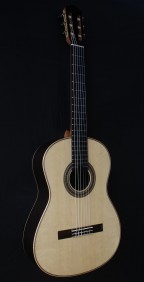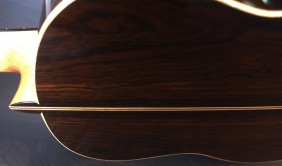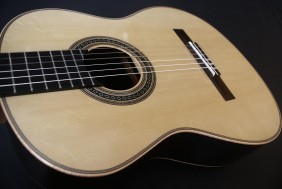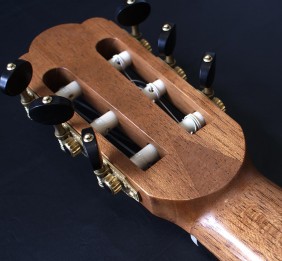HAUSER STYLE CLASSICAL
| Top: | German Spruce | Finish: | French Polish |
|---|---|---|---|
| Back & Sides: | Brazilian Rosewood | Tuners: | Rubner Superior |
| Neck: | Honduran Cedar | Scale Length: | 25-1/2” (648mm) |
| Fingerboard: | African Ebony | Neck Width: | 2-1/32” (52mm) |
| Bridge: | Brazilian Rosewood | Body Width: | 14-1/2” (370mm) |
| Headplate: | Brazilian Rosewood | Body Depth: | 3-13/16” (97mm) |
| Frets: | Nickel Medium | Price: | AU$11,500 – sold |
Time honoured design, uncompromising workmanship and the rarest tonewoods have come together to make this one of the finest classical guitars we have built.
The balance and clarity of the sound of this Hauser-style classical are remarkable, every note comes through clear and strong. The tone is beautiful and sweet with ample volume, deep basses and quick trebles.
We have taken the rarest and most exceptional timbers and crafted them with the upmost care to achieve this quality of sound. The soundboard is made from aged German Spruce and exhibits a striking ‘bearclaw’ figure. Bearclaw is a natural figuring caused by waves in the grain of the spruce. This figuring not only looks stunning, it adds a quality to the sound which is rarely heard from standard soundboards.
Many great classical guitar makers of the past century have chosen bearclaw German Spruce as their preferred soundboard timber. Hermann Hauser I used bearclaw timber in many of his instruments including the famous 1937 guitar played by Segovia.
The 1937 Segovia model is one of the instruments we used as a basis of our Hauser model, another being a 1966 Hauser II. We have spent many years building guitars in the Hauser style and this model has slowly evolved during this time. This instrument has a unique look and a sound all of its own, but it carries on the essence of the great Hauser guitars which inspired it.
While the soundboard is the heart and soul of a classical guitar, the back and sides are extremely important. The back and sides used in this instrument are Brazilian Rosewood. This legendary timber has become very rare and is almost never seen in modern guitar building. The colour of the timber in is a rich, dark chocolate which illuminates to display deep, complex grain patterns. The timber is over 30 years old, making it very stable and resonant.
The neck of the instrument is Honduran Cedar (also known as Spanish Cedar) and exhibits a ‘V’ jointed neck joint, as is traditionally used on Hauser guitars. The rosette is also inspired by Hauser guitars and features a simple and elegant geometrical pattern coupled with an outer motif, featuring subtle brown and green elements.
The instrument is comfortable to play due to the refined neck shape and medium-sized body. The action is set as low as possible for this style of traditional classical guitar. The fingerboard has been shaped with a very small amount of relief in the bass side and the frets levelled with a high degree of precision. This attention to detail has made it possible to get a lower, more comfortable action.
